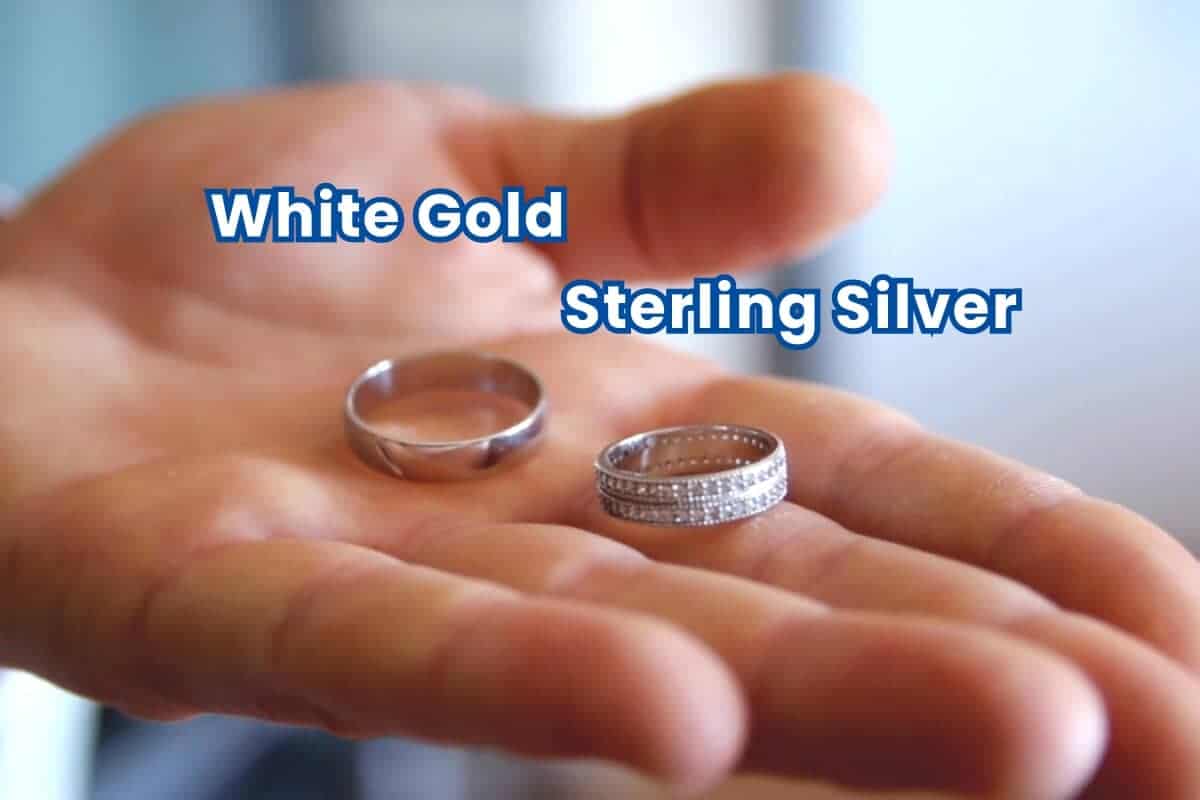10k White Gold vs Sterling Silver: Which Metal Wins?
Exploring the Pros and Cons of Two Popular Metals for Jewelry-Making
By Jane Pardo | Updated May 13, 2023
10k white gold and sterling silver are excellent choices if you’re looking for affordable, durable, and understated pieces for your jewelry collection. They show off the same dazzling white sheen that perfectly complements various outfits and styles.
But what are their differences, and which is the better choice?
Learn everything about 10k white gold and sterling silver with our quick guide. We’ll weigh their pros and cons to help you make the best decision, whether you want beautiful accents to level up your ensemble or a special gift for a loved one.
Table of contents
10k white gold vs sterling silver
It’s easy to confuse white gold with sterling silver jewelry as both flaunt a luxurious white color. But there are stark differences.
10k white gold jewelry is more durable than sterling silver, making it an ideal choice for daily wear. And unlike sterling silver, white gold doesn’t tarnish. In terms of cost, white gold is more expensive than sterling silver. Both are alloys with metals like copper.
Let’s further compare the pros and cons of these jewelry types.
Durability
Durability is an essential factor when choosing the right material for your accessories. Basically, the more frequently you wear a jewelry piece, the more durable it should be.
10k white gold
- Tougher than sterling silver
- Resists scratches and doesn’t misshapen easily
- A better choice for everyday jewelry, like low-cost engagement rings
Sterling silver
- Softer and damages more easily (can bend and lose shape with accidental bumps and constant wear)
- A good choice for occasional accent pieces you intend to wear less frequently
Tarnish resistance
While white gold and sterling silver contain metal alloys for strength, not both are vulnerable to corrosion.
10k white gold
- Doesn’t tarnish due to its rhodium plating, which provides an extra layer of protection
- Maintains its lovely luster longer
- Reveals its original yellowish-white color when the rhodium plating wears out
- Recoating is necessary once it loses its shiny silvery-white appearance
Sterling silver
- Tarnishes quickly without proper care
- The copper in sterling silver reacts with sulfur and salt in the air and other environmental elements
- Turns into an unattractive yellow or black tint when it fades
- Refinishing brings back its like-new condition and prevents tarnish
Cost
Silver is more affordable than gold, so sterling silver is generally a cheaper option. But as with any jewelry, the design, brand, and demand affect their prices.
10k white gold
- More expensive than sterling silver but costs less than higher gold karats
Sterling silver
- An affordable alternative to white gold if you want inexpensive accents to elevate your wardrobe
Shine
Both white gold and sterling silver flaunt a mesmerizing white sheen that adds understated appeal to any outfit.
10k white gold
- Shows off a more sophisticated shine, making it ideal for rings and earrings
Sterling silver
- Usually looks shinier; perfect for eye-catching bracelets and necklaces
Care
Sterling silver jewelry needs more care than white gold as it is softer and easier to scratch and tarnish.
It’s best to remove any jewelry before doing household chores, working out, or taking a shower, whether wearing white gold or sterling silver.
Your jewelry will look stunning for many years with proper care.
10k white gold
- Clean with a mixture of warm water and gentle dish soap. You may use a soft toothbrush to remove stubborn dirt in nooks. Rinse with water.
Sterling silver
- Mix two spoons of baking soda and a half cup of white distilled vinegar. Soak your jewelry for 1 to 2 hours. Rinse with water.
Nickel allergy
Sterling silver is NOT a good choice if you have a nickel allergy.
- Ask your jeweler for nickel-free 10k white gold pieces if you can’t afford higher gold karats.
- Have your white gold accessories replated every 1 to 2 years to prevent allergic reactions. The rhodium plating makes white gold hypoallergenic.
White gold vs sterling silver: What are they made of?
10k white gold composition
- 10k white gold contains 10 parts yellow gold and 14 parts white metals, typically silver, nickel, zinc, palladium, and copper.
That means it has 41.7% pure gold and 58.3% alloys. It has the lowest fineness of all gold karat types accepted in the US market. However, it’s the most durable and damage-resistant gold karat type as it contains the highest amount of non-gold metals.
Sterling silver composition
- Sterling silver, sometimes called 925 silver, is a high-quality silver alloy with 92.5% pure silver and 7.5% other metals, usually copper.
Like pure gold, pure silver is so soft and easy to dent. Adding sturdier metals makes it more rigid for jewelry and other common silver uses.
Final thoughts
10k white gold and sterling silver are fantastic choices for statement pieces, whether going on a classy date or having a Sunday brunch with friends.
Weigh the pros and cons discussed above to know the best choice.
- Go for 10k white gold if you want better durability and an affordable price tag.
- Consider sterling silver if you want stunning yet more budget-friendly accessories.
Whichever you choose, remember that proper use and care are key to maintaining the lovely shine and beauty of your jewelry for many years to come.
Written by Jane Pardo

Jane Pardo is our senior gold & silver expert. Jane lends insight into precious metals investing, collecting, testing, and maintenance.
Trending posts under
As participant in an affiliate advertising program, we earn from qualifying purchases.